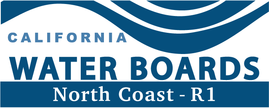Watershed Management
Watershed management is a strategy for integrating and managing resources. The goal of the state’s Watershed Management Initiative (WMI) is to integrate water quality monitoring, assessment, planning, standards, permit writing, nonpoint source management, ground water protection, and other programs at the State and Regional Water Boards to promote a more coordinated and efficient use of personnel and fiscal resources while ensuring maximum water quality protection benefits. The State’s watershed work integrates and supports, to the extent possible, local community watershed protection efforts to implement cost-effective strategies for natural resource protection. As characteristics and resources vary widely from watershed to watershed, this approach customizes efforts to manage resources and address problems unique to each watershed while offering stakeholders the opportunity to implement the cost-effective solutions to problems in their watersheds.
Watershed management represents a shift from a traditional approach that focuses on regulation of point sources, to a more regional approach that acknowledges environmental impacts from other activities. Over the last twenty-five years, permitting programs have significantly reduced pollutants that are discharged to California’s waters from point sources. However, the quality of many waters continues to be degraded from pollutants discharged from diffuse and diverse sources, referred to as nonpoint sources, and from the cumulative impacts of multiple point sources. Future success in reducing pollutants from nonpoint sources and achieving additional cost-effective reductions in pollutants from point sources requires a shift to a more geographically-targeted approach.
A key component of the 2001 Strategic Plan for the State Water Resources Control Board and the nine Regional Water Quality Control Boards is a watershed management approach. The Watershed Management Initiative is intended to support the Strategic Plan to address the goals of:
- The Boards’ organizations are effective, innovative and responsive
- Surface waters are safe for drinking, swimming, and support healthy ecosystems and other beneficial uses
- Ground water is safe for drinking and other beneficial uses
- Water resources are fairly and equitably used and allocated consistent with public trust
- Individuals and other stakeholders support our efforts and understand their role in contributing to water quality
- Water quality is comprehensively measured to evaluate protection and restoration efforts.
Watershed Management Initiative Chapter
The WMI seeks to facilitate solutions from all interested parties in a watershed, and coordinate measures to improve watershed health, and ultimately the beneficial uses of water. Each regional board has identified watersheds in their region, prioritized water quality issues, and developed watershed management strategies that are included in their WMI Chapter. The Chapter and its Appendices is organized into sections including the Executive Summary, Introduction, Watershed Sections, and Regional Activities. Included in each Watershed Section is an overview of that watershed, a description of its water quality concerns and issues, past significant Regional Board activities in the watershed, current activities, near-term activities that would benefit the watershed, and activities which may happen on a longer time-scale. Six watershed management areas (WMA) are designated in the Region: Klamath River, Trinity River, Humboldt Bay, Eel River, Russian/Bodega, and North Coast Rivers.
The Chapter is currently used both as an outreach and as a planning tool to identify the Region’s priorities, describe where we should spend our baseline resources, as well as the need for additional resources. The Chapter itself is not a commitment to complete work but provides a framework to identify priorities and resource needs. Annual program workplans and grant applications will still be prepared by program managers to identify which activities are going to be funded in a particular year based on the fiscal decisions made. The highest priority activities identified in the Chapter include:
- Maintaining the core regulatory program for regulated dischargers
- Increasing emphasis on storm water runoff issues
- Increasing monitoring and assessment activities
- Increasing emphasis on nonpoint source issues (including forestry), especially as they affect salmonid resources
- Developing and implementing Total Daily Maximum Load strategies (mostly sediment and temperature associated with salmonid resource declines)
- Improving outreach and community involvement in decisions, and
- Fostering watershed groups and volunteer monitoring



